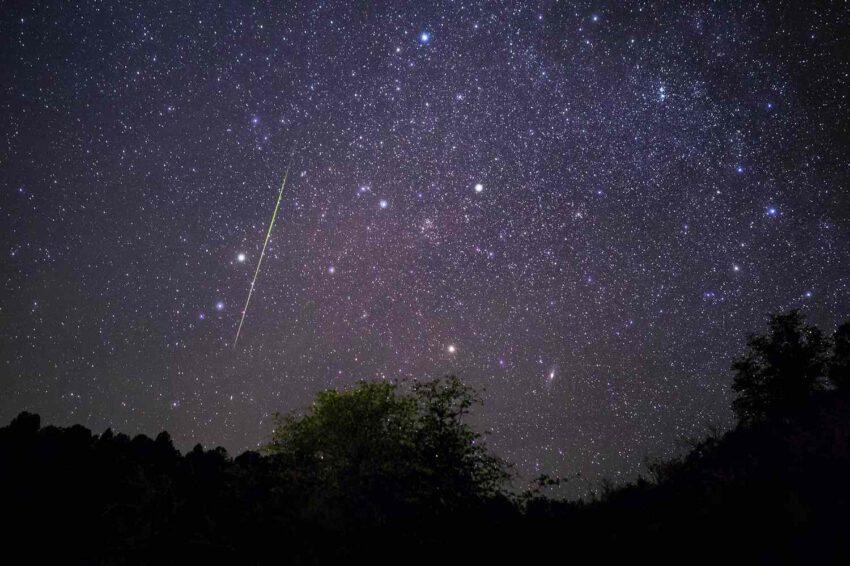:max_bytes(150000):strip_icc()/TAL-meteor-shower-starry-night-sky-LEONIDSHWR1123-cffab731aba44062819d3a37f7e59cef.jpg)
It’s tough to beat the conditions for this weekend’s Leonid meteor shower peak.
The waning crescent moon will set shortly after dusk, leaving the skies dark and primed for an explosion of shooting stars when the Leonids peak from the night of Friday, Nov. 17 into pre-dawn on Saturday, Nov. 18. From a remote, dark-sky perch, you could see roughly 15 meteors per hour, according to The Planetary Society.
If a weekend beneath the stars sounds dreamy, you’re in the right place. Here’s how to watch the weekend’s Leonids peak, from where to look to the best viewing spots — and a few other night-sky sights to enjoy between sky streaks.
How to Watch the Leonid Meteor Shower
The full Leonid meteor shower runs from Nov. 3 to Dec. 2, and reaches peak activity overnight and into the early morning from Nov. 17 to 18. According to NASA, optimal viewing begins around midnight local time. You could see up to 15 shooting stars per hour at peak; a remote, low-light-pollution perch is key.
To spot the shower’s myriad meteors, look east toward the constellation Leo. Give your eyes 30 minutes to adjust to the darkness for the real magic to begin. Sky-gazers in both the Northern and Southern hemispheres can enjoy the show — but what you see largely depends on where you watch.
Where to Watch the Leonids
To see the best Leonids show, stargaze from a dark-sky destination with open views toward the eastern sky. Try a lake, elevated viewpoint, or hilltop if you can. Pack a lawn chair or sleeping bag to get cozy while you scour for shooting stars. Don’t forget winter stargazing essentials, such as blankets, hand warmers, and coats.
Make the Most of Your Night Beneath the Stars
While you don’t need stargazing binoculars or a telescope to see the Leonids, it’s worth bringing your gear to admire other interstellar marvels. Spy on Regulus, the brightest star in the Leo constellation; it twinkles with a blue tint — a symbol of its sizzling atmosphere, which is twice as hot as the sun, according to stargazing app SkySafari. In the western sky, see Jupiter, Uranus, and the Pleiades star cluster lined up between the constellations Aeries and Taurus.
